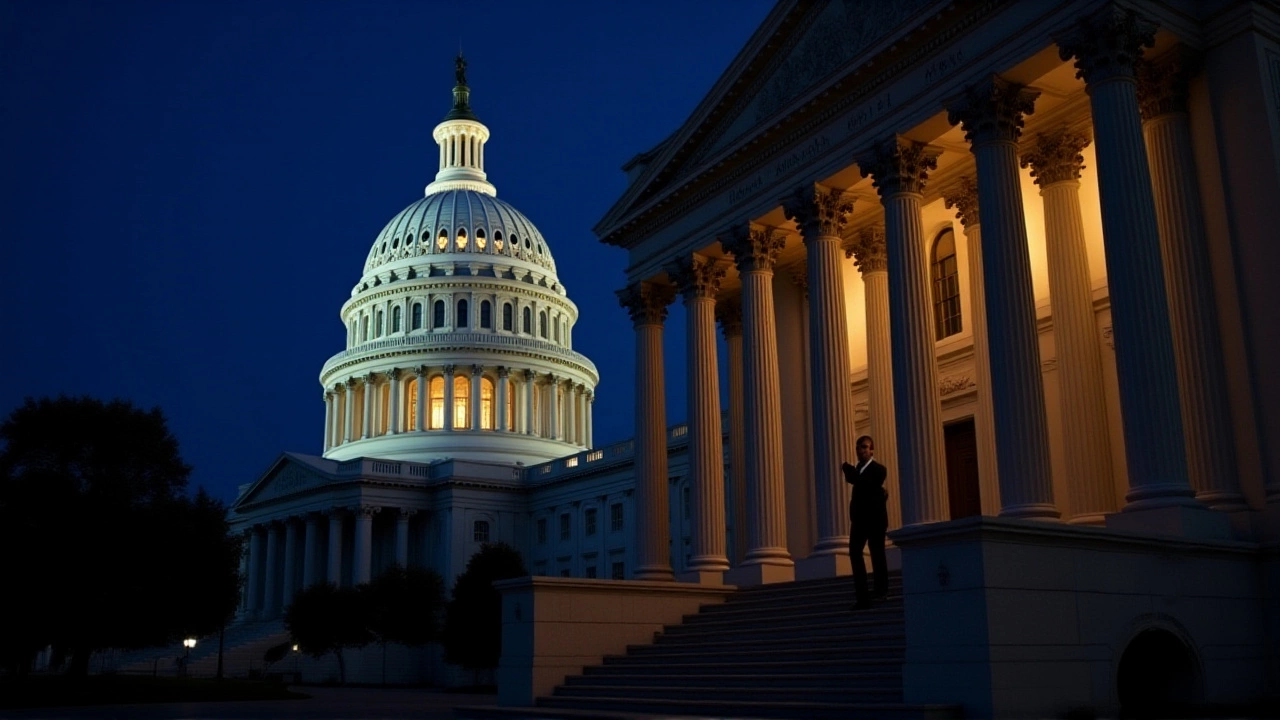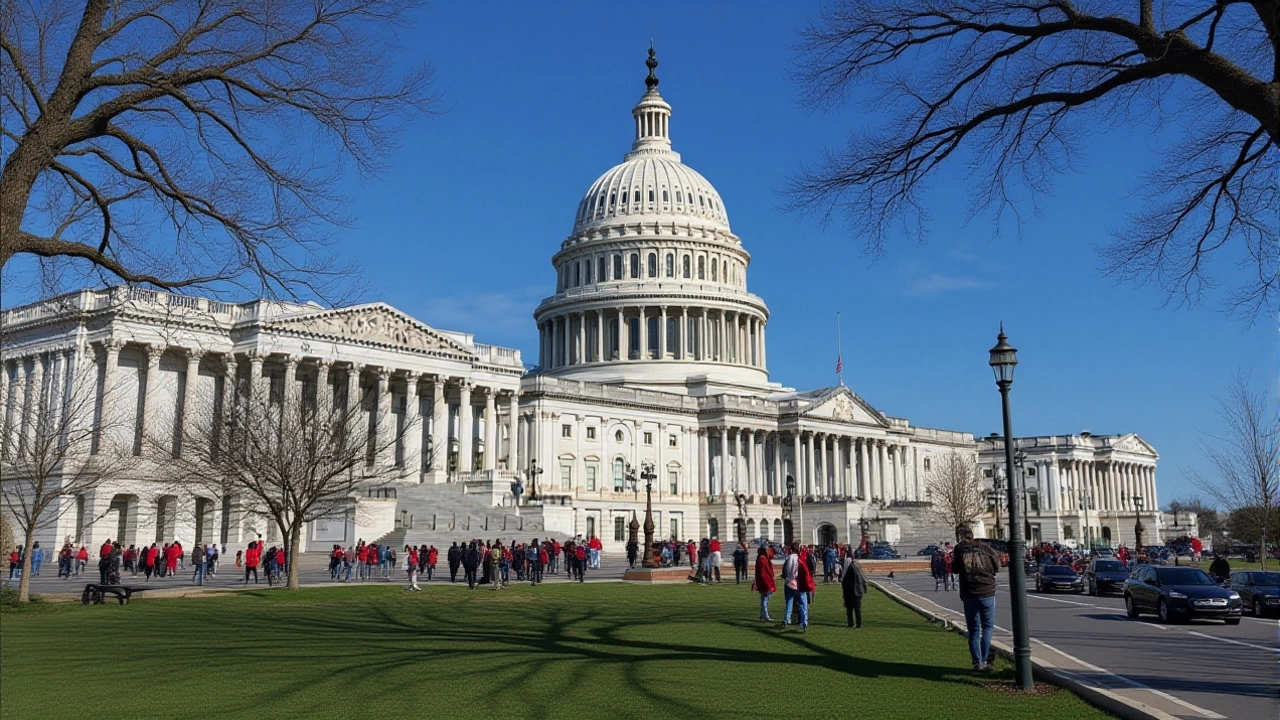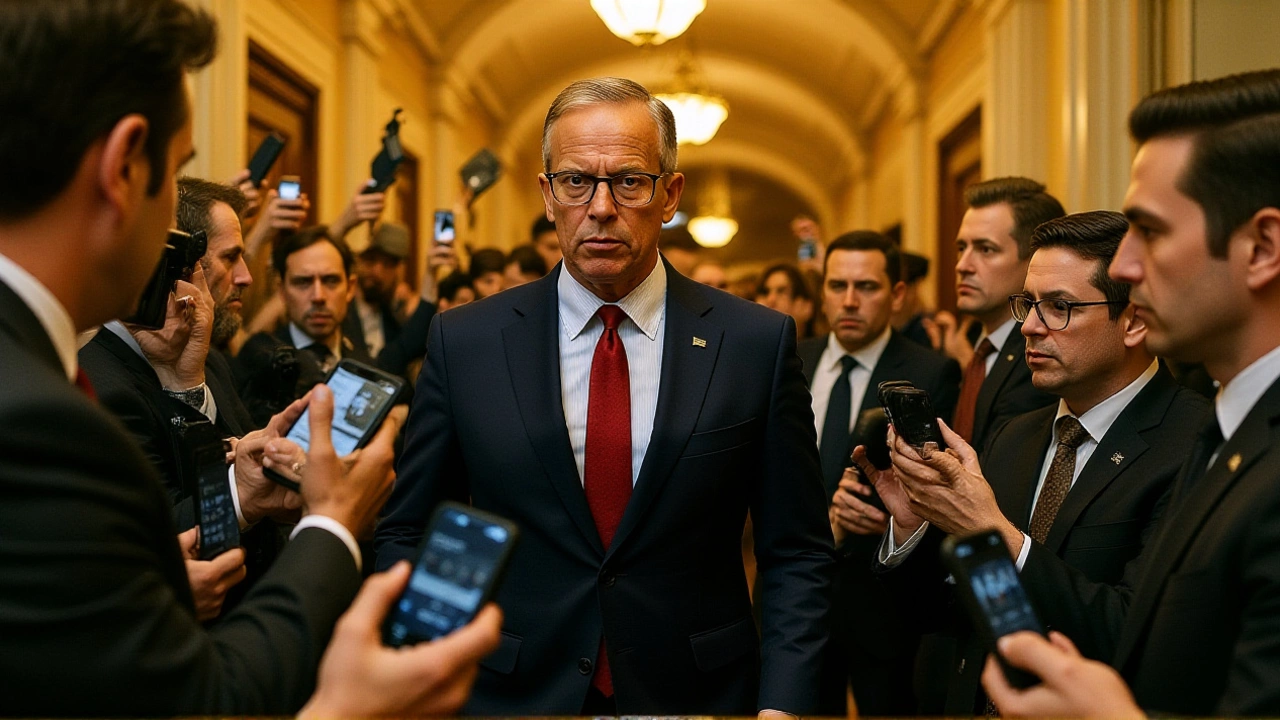
When United States Senate voted on October 6, 2025, at roughly 10:00 p.m. Eastern, the chamber fell short of the 60‑vote threshold for the third time this week, letting the government shutdown stretch another day. The measure in question was the House‑passed continuing resolution (CR) that would have kept federal agencies funded through November 17. House of Representatives had approved the CR on September 30, 2025, by a 220‑201 margin, only to watch it sputter in the Senate’s hands.
- Vote tally: 52‑42 in favor, 94 senators present.
- Required votes for cloture: 60.
- Fifth consecutive failure since the shutdown began on Oct 1.
- Approximately 2.1 million federal employees affected; 800,000 furloughed.
- Key health‑care watchdog: American Hospital Association (AHA).
Background on the Funding Standoff
The funding deadlock didn’t start on Oct 6. The previous continuing resolution expired at 12:01 a.m. ET on Oct 1, 2025, snapping shut the government’s cash flow after years of near‑continuous appropriations. Lawmakers have been juggling short‑term fixes and longer‑term budget battles ever since. Historically, a CR is a stop‑gap that simply extends existing spending levels; this one was meant to buy time until a full‑year appropriations package could be hammered out.
Why the Senate has been a stumbling block is partly procedural. Under Senate Rule XXII, a filibuster can be broken only with a three‑fifths majority—60 votes. That rule applies to most legislation, including budget bills, and has become a partisan flashpoint in recent decades.
The October 6 Vote Details
During an evening session in the United States Capitol, 94 senators cast ballots on the CR. The tally—52 for, 42 against—fell well short of the 60‑vote cloture requirement.
Among the six senators who crossed party lines to support the House bill were John Fetterman, the 59‑year‑old Democrat from Pennsylvania; Catherine Cortez Masto, also 59, representing Nevada; and Angus King, the 70‑year‑old Independent from Maine. Their votes mirrored the pattern from the previous day, showing a modest but notable bipartisan tilt toward keeping the lights on.
Conversely, Rand Paul, the 61‑year‑old Republican from Kentucky, joined the Democrats in opposing the measure, citing concerns over broader fiscal discipline. The rest of the Senate split along party lines, with Republicans largely voting “no” and Democrats largely voting “yes.”
At the same time, Senate Democrats rolled out their own short‑term funding proposal, hoping to plug gaps around health‑care spending. That alternative fared worse—losing 45‑50, with every Republican present voting against it.

Reactions from Key Lawmakers
Senate Majority Leader Chuck Schumer, the 74‑year‑old Democrat from New York, lamented the missed opportunity, saying the nation “cannot afford another day of uncertainty for our federal workers.” Across the aisle, Minority Leader Mitch McConnell, 82, dismissed the Democrats’ health‑care amendment as “political theater” and warned that further delays would only harden public frustration.
The AHA’s President and CEO, Rick Pollack, 65, warned that the prolonged shutdown could force hospitals to dip into emergency reserves, jeopardizing patient care in both urban and rural settings. “Every day without federal funding chips away at the safety net,” he said in a statement released from the association’s Washington office at 1555 M Street NW.
In the House, Speaker Kevin McCarthy (R‑CA) expressed optimism that “a bipartisan solution is still on the table,” but admitted that “the Senate’s procedural hurdles are the real roadblock.”
Impact on Federal Employees and Health‑Care System
The numbers are stark. Roughly 2.1 million civilian federal workers are stranded in limbo, with an estimated 800,000 furloughed without pay. Agencies ranging from the Department of Education to the National Park Service have halted non‑essential operations, leaving millions of Americans without services they rely on daily.
For health‑care, the stakes are even higher. AHA data show that hospitals serving low‑income neighborhoods depend on federal programs like Medicaid and the Children’s Health Insurance Program (CHIP) for up to 30 % of their revenue. A disruption in those payments could force hospitals to postpone elective surgeries, delay new hires, and even lay off support staff.
Veterans’ hospitals are also feeling the pinch. Without a full appropriation, the Department of Veterans Affairs has warned of “potential reductions in outpatient services” beginning next week.

What Lies Ahead
According to the congressional calendar, the Senate is slated to reconvene on Oct 8 at 3:00 p.m. ET. While the AHA’s report notes that “formal negotiations have yet to resume,” insiders say back‑channel talks between Schumer’s aides and McConnell’s staff are likely to intensify over the weekend.
Analysts at the Brookings Institution argue that the only viable path forward is a “clean” CR that avoids the contentious health‑care provisions that have stalled the Senate Democrats’ version. Others suggest a “grand bargain” that couples short‑term funding with a roadmap for deficit reduction.
Whatever the outcome, the clock is ticking for federal employees who have already missed two paychecks. The political calculus will now revolve around public pressure, the upcoming mid‑term elections, and the looming budget deadline on Dec 15, when the full‑year appropriations must be enacted.
Frequently Asked Questions
How does the shutdown affect federal workers?
Around 2.1 million civil servants are stuck without a paycheck, and roughly 800,000 have been furloughed. Essential services continue, but many offices are closed, delaying things like passport renewals and tax processing.
What would a clean continuing resolution look like?
A clean CR would simply extend current funding levels without attaching new policy riders—especially those around health‑care financing that have become a sticking point for Senate Democrats.
Why is the 60‑vote cloture rule such a barrier?
The filibuster rule requires three‑fifths of the Senate to end debate on most legislation. With the chamber split 50‑50, reaching 60 votes means at least ten members of the minority must agree, a feat that’s proven elusive on contentious budget matters.
What impact could the shutdown have on hospitals?
According to the American Hospital Association, a prolonged funding gap could force hospitals to tap emergency reserves, postpone elective procedures, and potentially cut staff, especially in facilities that rely heavily on Medicaid reimbursements.
When is the next Senate vote expected?
The Senate is scheduled to meet on Oct 8, 2025, at 3:00 p.m. ET. While the agenda hasn’t been publicly released, lawmakers expect another attempt at a cloture vote or a fresh CR proposal.


